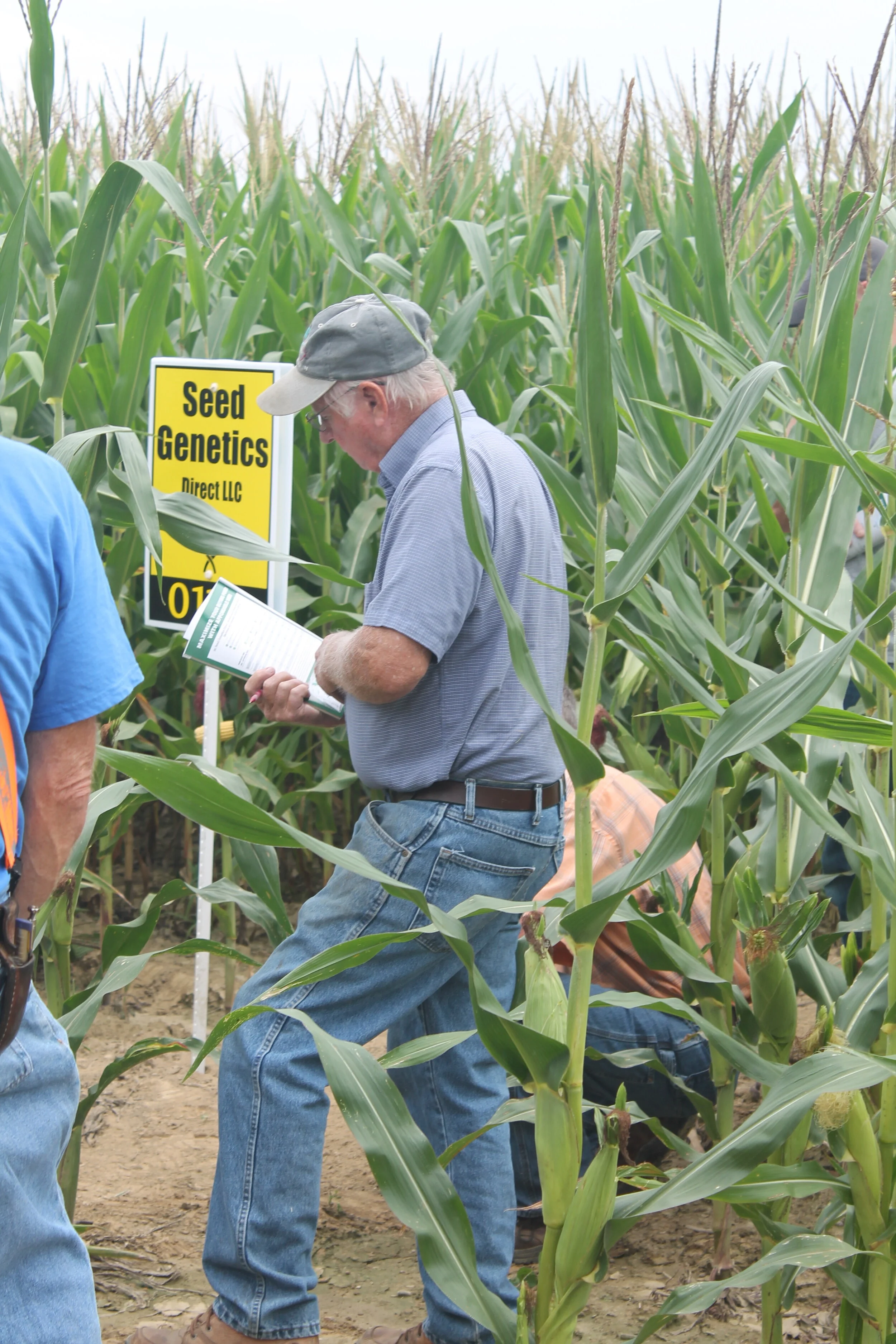Oct. 11, 2023 • “We found 34 to 36 kernels per row in ’22, but we found 40 to 42 kernels per row this year,” Nanda said. That’s a 15 percent increase, which translates into 15 percent more kernels per ear in ’23.”
Read MoreMay 16, 2023 • These corn plants are trying to branch out and grow down, but it appears they’re following tiny cracks in the hard soil layers as they try to grow. Soil compaction is limiting rooting…
Read MoreNov. 28, 2022 • “It was an up-and-down season, but it turned out well,” said Dave Nanda, director of genetics for Seed Genetics Direct. What was that yield? At 15.5 percent moisture, the grower reported an average yield of 2…”
Read MoreOct. 7, 2022 • If ears remain upright and husks are tight, ears tend to hold more moisture, and it provides a more favorable environment for ear molds to develop.
Read MoreSept. 14, 2022 • While there may not be the record yields across Ohio as was last year, growers can still plan to protect plants and yield as much as possible. Use the push or pinch test to test lodging in corn…
Read MoreAugust 19, 2022 • Seed Genetics Direct field days provide the opportunity to tour corn and soybean fields to compare how corn hybrids, soybean varieties and treatments performed during the growing season.
Read MoreAugust 16, 2021 • Field days provide the opportunity for growers to see and touch many of the new hybrids and varieties that have come out in the past year. Growers can learn about each one individually and compare it with what they are currently growing.
Read MoreMay 25, 2021 • The #CornWatch21 field was planted April 25. Half the corn field was conventionally tilled following soybeans, and half was no-tilled into soybean stubble.
Read MoreMay 23, 2021 • Consider sacrificing a few plants to see how root systems are developing. If root systems aren’t as robust as you’d like, now is the time to determine why.
Read MoreMarch 3, 2021 • Some growers may want to consider bumping seeding rate next year to get the plant population they really want.
Read MoreMarch 2, 2021 • Brazil's first corn crop, which competes for area with soybeans, accounts for about 25 percent of total production and is harvested from January to May. It has failed in two southern states (Rio Grande do Sul and Santa Catarina), but is in good shape elsewhere.
Read MoreFeb. 19, 2021 • Every year, we learn new things. Read seven corn and soybean lessons learned in 2020.
Read MoreDec. 15, 2020 • Tell Seed Genetics what to test against to ensure research data provides the comparisons all farmers want! This program is free and farmers do not need to be a SGD customer to supply a corn or bean competitive check.
Read MoreDec. 10, 2020 | SGD has specialty products to help prevent or manage weeds and diseases, micronutrients to boost growth, seed lubricants to promote seed flow, and more. For pricing…
Read MoreOct. 27, 2020 | Some plants which emerged four days or more behind the first plants in the Corn Watch ‘20 field still produced decent ears. In a few cases, plants which emerged on time struggled. What we saw wasn’t as black-and-white as you might think.
Read MoreSept. 10, 2020 | Many corn fields were affected by gray leaf spot because of high temperatures and humidity. Leaf diseases predispose plants to stalk rots, so if a field had leaf diseases, it probably will have stalk rots. To determine if stalks are severely infected, conduct the pinch or push test.
Read MoreAugust 20, 2020 | A plant was struggling to exist in the Corn Watch ‘20 field. Its diameter was much smaller than the plant next to it, and it was several growth stages behind. Two days difference in emergence should not result in that kind of difference.
Read MoreAugust 10, 2020 | Seed Genetics Direct will host its annual field days in Ohio and Indiana between August 25 and Sept. 16. Each event will occur from 11 a.m. - 7 p.m. with COVID-19 precautions.
Read MoreJune 12, 2020 | Many variables should be considered when applying nitrogen to corn such as location, soil, plant height and timing.
Read MoreJune 1, 2020 | Ten consecutive rows in one planter pass of a 24-row planter were included in the Corn Watch ’20 emergence test.
Read More




















